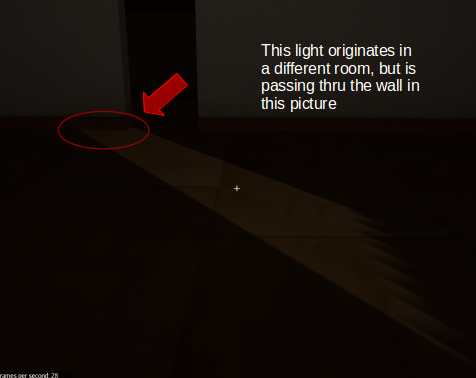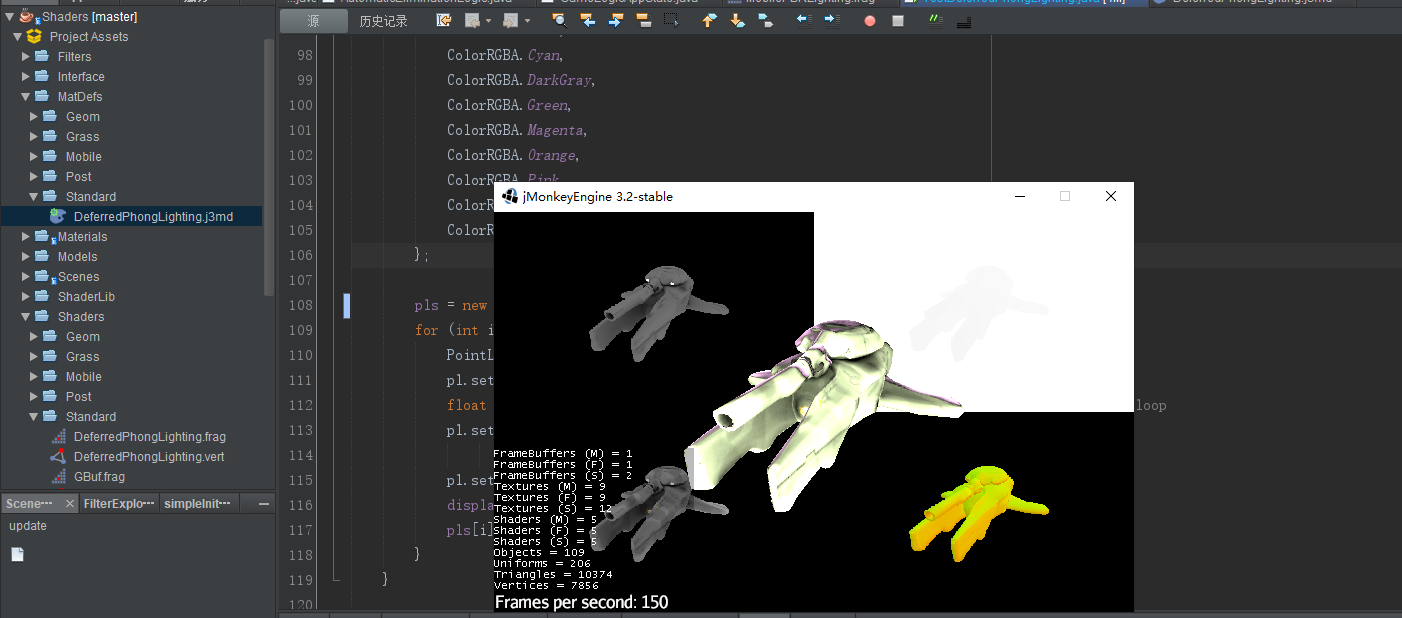@author codex
*/
public class Wall {
Vector3f pos, axis;
float width, height, thickness;
Node wallNode = new Node();
RigidBodyControl phys = new RigidBodyControl(0);
Material mat = null;
public static final String REG = “regular”, NONE = “none”, ENTIRE = “entire”, SAME = “same”, WINDOW = “window”;
String doorMode = REG;
float doorWidth = 3f, doorTop = 1.5f, doorOffset = 0;
Vector3f posiPos = new Vector3f();
Vector3f posiSize = new Vector3f();
Vector3f negPos = new Vector3f();
Vector3f negSize = new Vector3f();
Wall(Vector3f pos, Vector3f axis, float width, float height, float thickness) {
this.pos = pos;
this.axis = axis;
this.width = width;
this.height = height;
this.thickness = thickness;
}
protected void setMaterial(Material m) {
mat = m;
}
protected void setDoorWidth(float w) {
if (w != 0) doorWidth = w;
}
protected void setDoorOffset(float off) {
if (off != 0) doorOffset = off;
}
protected void setDoorMode(String mode) {
if (!mode.equals(SAME)) doorMode = mode;
}
protected void setDoorTop(float top) {
if (top != 0) doorTop = top;
}
protected void setDoorMat(Material m) {
}
private void setPosiCoord() {
if (doorMode.equals(REG) || doorMode.equals(WINDOW)) {
float s = Math.abs(width+doorOffset-doorWidth)/2;
if (axis == Vector3f.UNIT_X) {
posiPos.set(width-s, height0.5f, 0);
posiSize.set(s, height, thickness);
}
else if (axis == Vector3f.UNIT_Z) {
posiPos.set(0, height0.5f, width-s);
posiSize.set(thickness, height, s);
}
}
else if (doorMode.equals(NONE)) {
if (axis == Vector3f.UNIT_X) {
posiPos.set(0, height0.5f, 0);
posiSize.set(width, height, thickness);
}
else if (axis == Vector3f.UNIT_Z) {
posiPos.set(0, height0.5f, 0);
posiSize.set(thickness, height, width);
}
}
}
private void setNegCoord() {
float s = Math.abs(width-doorOffset-doorWidth)/2;
if (axis == Vector3f.UNIT_X) {
negPos.set(-width+s, height0.5f, 0);
negSize.set(s, height, thickness);
}
else if (axis == Vector3f.UNIT_Z) {
negPos.set(0, height0.5f, -width+s);
negSize.set(thickness, height, s);
}
}
private void initPosiWall() {
if (!doorMode.equals(ENTIRE)) {
Box b = new Box(posiSize.x, posiSize.y, posiSize.z);
Geometry g = new Geometry(“pos wall”, b);
g.setLocalTranslation(posiPos);
g.setMaterial(mat);
g.setShadowMode(RenderQueue.ShadowMode.CastAndReceive);
//g.setUserData(KEY, this);
wallNode.attachChild(g);
}
}
private void initNegWall() {
if (!doorMode.equals(ENTIRE) && !doorMode.equals(NONE)) {
Box b = new Box(negSize.x, negSize.y, negSize.z);
Geometry g = new Geometry(“neg wall”, b);
g.setLocalTranslation(negPos);
g.setMaterial(mat);
g.setShadowMode(RenderQueue.ShadowMode.CastAndReceive);
wallNode.attachChild(g);
}
}
private void initTop() {
if (!doorMode.equals(ENTIRE) && !doorMode.equals(NONE)) {
Geometry g = new Geometry();
Geometry g2 = new Geometry();
if (axis == Vector3f.UNIT_X) {
Box b = new Box(doorWidth, doorTop, thickness);
g = new Geometry(“top wall”, b);
//g.setMesh(b);
g.setLocalTranslation(-doorOffset, height1.5f-doorTop, 0);
g2 = new Geometry(“bottom wall”, b);
g2.setLocalTranslation(-doorOffset, -height0.45f+doorTop, 0);
}
else if (axis == Vector3f.UNIT_Z) {
Box b = new Box(thickness, doorTop, doorWidth);
g = new Geometry(“top wall”, b);
g.setLocalTranslation(0, height1.5f-doorTop, -doorOffset);
g2 = new Geometry(“bottom wall”, b);
g2.setLocalTranslation(0, -height0.45f+doorTop, -doorOffset);
}
g.setMaterial(mat);
g2.setMaterial(mat);
g.setShadowMode(RenderQueue.ShadowMode.CastAndReceive);
g2.setShadowMode(RenderQueue.ShadowMode.CastAndReceive);
wallNode.attachChild(g);
if (doorMode.equals(WINDOW)) wallNode.attachChild(g2);
}
}
private void initDoor() {
}
protected void build() {
setPosiCoord();
setNegCoord();
initPosiWall();
initNegWall();
initTop();
wallNode.setLocalTranslation(pos);
//wallNode.setUserData(Interactable.KEY, this);
}
protected Node getNode() {
return wallNode;
}
}




